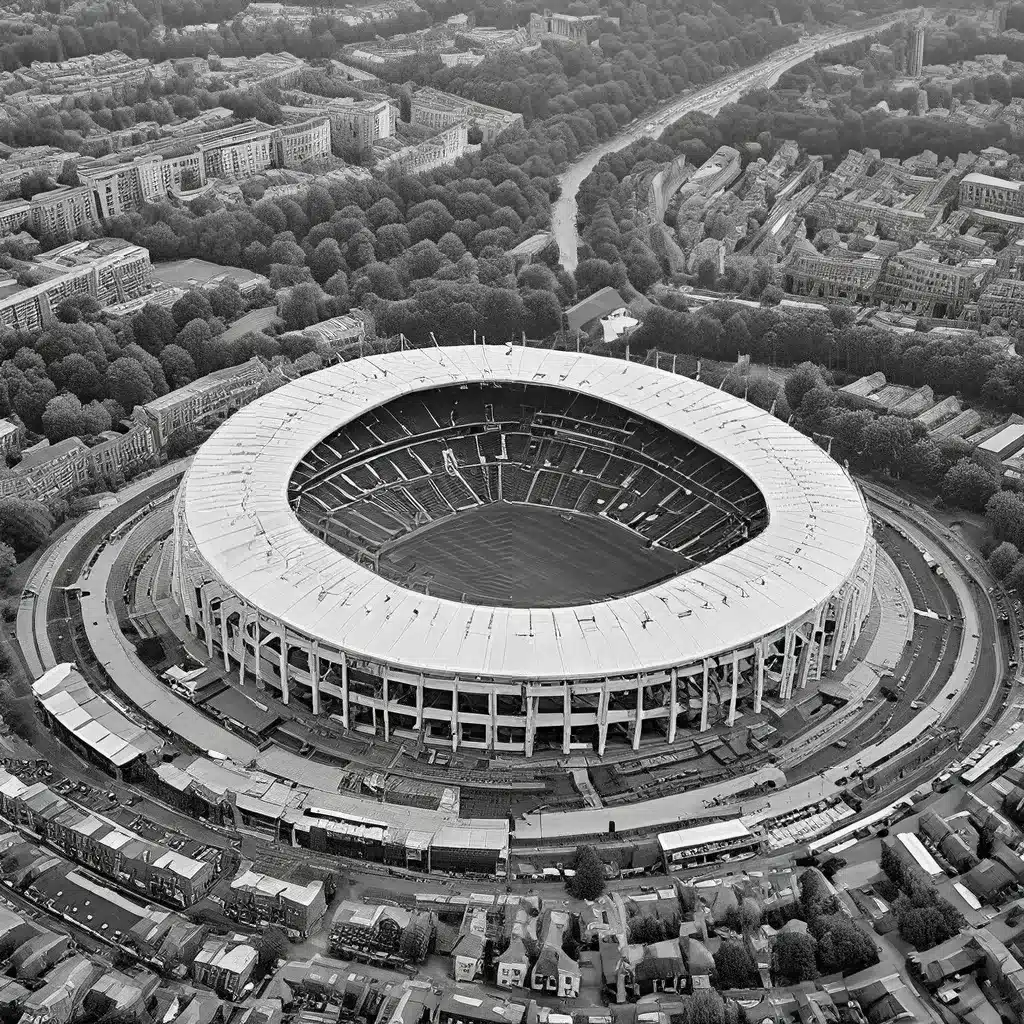
The Architectural Masterpiece of English Rugby
Twickenham Stadium, situated in the heart of southwest London, is a true architectural marvel and the spiritual home of English rugby union. This iconic venue has witnessed some of the most thrilling moments in the sport’s illustrious history, captivating fans and players alike with its unparalleled atmosphere and rich heritage.
The stadium’s origins can be traced back to 1907, when the Rugby Football Union (RFU) acquired a plot of land in Twickenham, then a quiet suburban town, with the intention of creating a dedicated home for the national team. Under the guidance of architect Archibald Leitch, construction began in 1907, and the first international match was played at the newly minted Twickenham Stadium in 1910, when England hosted Wales.
Twickenham Stadium’s early history was not without its challenges. The outbreak of the First World War in 1914 temporarily halted the stadium’s development, and it was not until the 1920s that the RFU was able to resume its expansion plans. Over the following decades, Twickenham underwent a series of transformations, with the construction of the West and East Stands in the 1930s, the South Stand in the 1960s, and the North Stand in the 1980s.
The Iconic East Stand and Architectural Evolution
One of Twickenham’s most recognizable features is the East Stand, which has become synonymous with the stadium’s timeless elegance. Designed by architect Sir Cyril Errington, the East Stand was completed in 1932 and immediately became a focal point of the stadium’s architectural identity. Its striking art deco-inspired design, featuring clean lines and a distinctive curved roof, has since been replicated in various renovations and expansions over the years.
The stadium’s architectural evolution has not only enhanced its visual appeal but also improved its functionality and spectator experience. The addition of the South Stand in the 1960s, for example, increased the stadium’s seating capacity and provided better views for fans. Similarly, the North Stand, completed in 1983, incorporated state-of-the-art facilities, including hospitality suites and modern media centers.
The stadium’s ongoing development has been a testament to the RFU’s commitment to maintaining Twickenham’s status as a world-class sporting venue. In recent years, the installation of a retractable roof over the East Stand, completed in 2016, has further improved the stadium’s climate control and enhanced the viewing experience for spectators.
The Shrine of English Rugby
Twickenham Stadium’s significance extends far beyond its architectural merits; it is a hallowed ground for English rugby enthusiasts, a place where the sport’s most iconic moments have unfolded. From the legendary Calcutta Cup matches against Scotland to the exhilarating Six Nations clashes, Twickenham has played host to some of the game’s most thrilling and memorable encounters.
The stadium’s atmosphere is truly unparalleled, with the roar of the crowd and the sense of national pride palpable during international fixtures. Fans from all over the world flock to Twickenham to experience the electric energy and camaraderie that permeates the venue on match days. The stadium’s capacity of over 82,000 ensures that the sound of the crowd resonates throughout the ground, creating an unforgettable experience for players and spectators alike.
The Venue for Iconic Moments
Twickenham Stadium has been the stage for countless iconic moments in rugby history. One such moment was the 2003 Rugby World Cup final, where England’s triumphant squad, led by the legendary Jonny Wilkinson, secured the nation’s first-ever World Cup title in a dramatic match against Australia. The stadium’s capacity was pushed to its limits as euphoric English fans celebrated the historic victory.
Another standout event was the 2015 Rugby World Cup semi-final between New Zealand and South Africa, widely regarded as one of the greatest matches in the sport’s history. The intensity of the contest, the skill of the players, and the electric atmosphere created a truly unforgettable experience for all in attendance.
The 2015 Rugby World Cup was a significant milestone for Twickenham, as the stadium played a central role in hosting the tournament. The venue’s world-class facilities and infrastructure were instrumental in the event’s success, further cementing its status as a global rugby destination.
The Spirit of the Stadium
Twickenham Stadium’s enduring legacy extends beyond its physical presence; it is a living embodiment of the spirit and passion that permeates the sport of rugby union. The stadium’s rich history and cultural significance have made it a beloved institution, not only for English rugby fans but for enthusiasts of the game worldwide.
The RFU’s commitment to preserving and enhancing Twickenham’s heritage has been instrumental in maintaining its status as a revered sporting venue. The organization’s investment in infrastructure upgrades and the incorporation of modern amenities have ensured that the stadium continues to meet the evolving needs of players, coaches, and spectators.
Twickenham Stadium’s journey is a testament to the unwavering dedication of the RFU and the countless individuals who have contributed to its success over the decades. As the sport of rugby continues to grow and evolve, Twickenham’s role as the spiritual home of English rugby remains undiminished, ensuring that it will continue to captivate and inspire generations of rugby enthusiasts for years to come.

